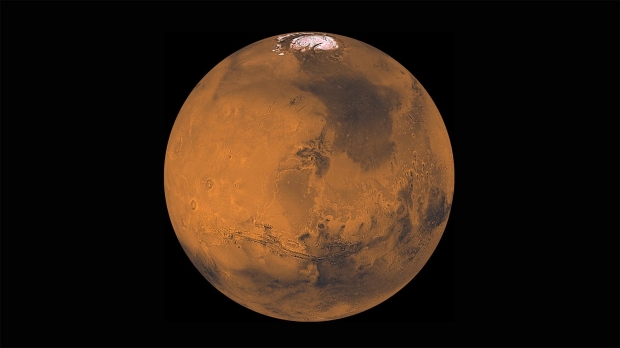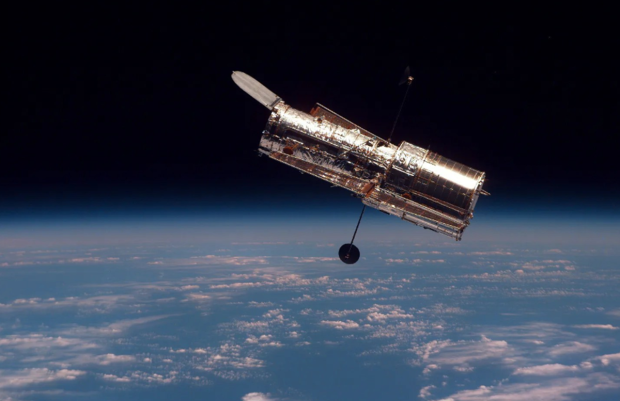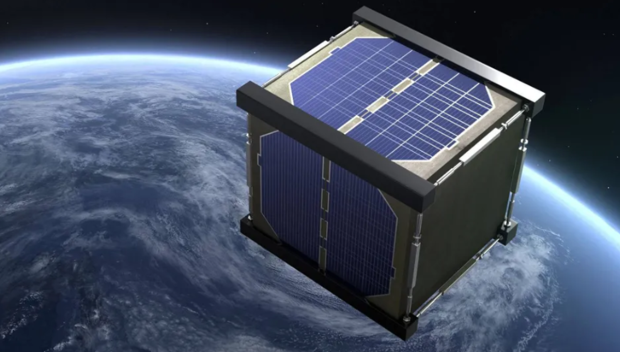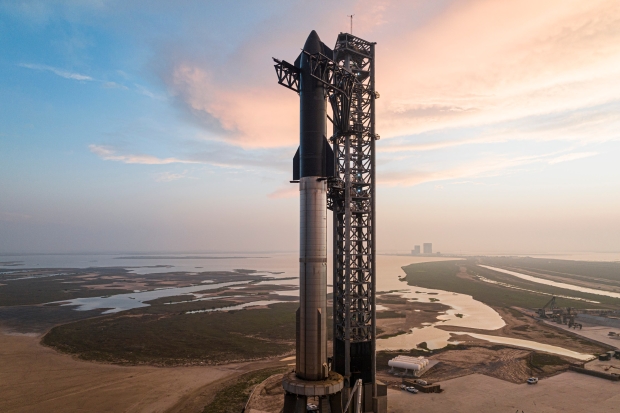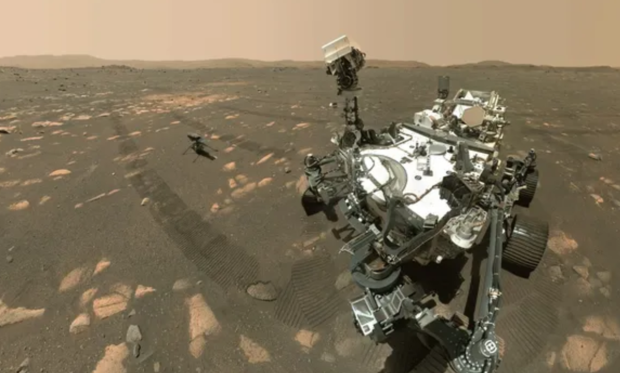Science, Space, Health & Robotics News - Page 25
'Devil comet' racing toward Earth violently erupts shooting out ice and gas into space
An icy comet that is racing toward Earth has given its largest outburst yet, spewing its icy innards out into surrounding space and forming its iconic "horns".
The comet is none other 12P/Pons-Brooks, an absolutely massive comet that's estimated to be 18 miles wide, or approximately three times the size of Mount Everest, has been in astronomy spotlight for quite some time as it makes its journey toward the inner solar system. As its getting closer to the Sun our local star is heating the surface of the icy comet, specifically the material under its icy crust. This heating process produces a gas that then builds beneath the crust eventually bursting out violently.
These eruptions can be seen as significant increases in brightness levels, as the massive outgassing provides more mass for the Sun's light to bounce off of, which is then seen by astronomers as an increase in the comet's overall size. In the instance of 12P/Pons-Brooks, this iconic comet grows its "devil horns", which seemingly forms into a halo-like coma.
Mars is going to disappear from Earth's sky for two weeks starting on Saturday
Mars is simply going to disappear from Earth's skies for two whole weeks, but there is nothing to worry about - the Red Planet will be back!
NASA has taken to its website to explain that it will be severing communications with all its robots currently stationed on the surface of Mars as the Red Planet is moving into what is called a "solar conjunction". So, what does this mean? Solar conjunction is a phenomenon that occurs once every two years, and it is when the Sun moves directly in-between the line of sight Earth has with Mars, obscuring our planet from any sight of the Red Planet for a period of two weeks.
While Mars is completely out of sight, its emissions are also problems. Our host star gives off hot, ionized gas continuously, which has the chance of corrupting radio signals sent from Earth to Mars. These corrupted radio signals can cause strange behaviors to happen within the robots that receive them. Commands can get mixed up, and there is the potential for catastrophic failure. Due to these risks, NASA has decided to halt all communications with Mars until the Sun is out of the way.
Country responsible for crashing a rocket into the dark side of the moon confirmed
Last year, a rocket crashed into the dark side of the moon, or the side of the moon that we never see due to the tidal locking.
Astronomers weren't really surprised by the crashed rocket as they were tracking the object through space for many weeks and found that its trajectory lined up perfectly, or not so perfectly, with the surface of the moon. The rocket was called WE0913A, and upon collision with the lunar surface, it created two craters that were then spotted by NASA's Lunar Reconnaissance Orbiter (LRO). Initially, astronomers thought the rocket belonged to SpaceX and was an upper stage of a Falcon 9 rocket that was launched in February 2015.
However, those suggestions have now been thrown out the window as a group based in the University of Arizona nailed down WE0913A is actually a Long March 3C rocket body (R/B) from the Chang'e 5-T1 mission. These results were penned in a new study that was published in the Planetary Science Journal on November 16. The team came to their conclusions through trajectory and spectroscopic analysis using ground-based telescope observations.
NASA telescopes scans nearby exoplanet and discovers its Earth-sized
The exoplanet NASA's Hubble Space Telescope has honed in on is officially called LTT 1445Ac and was first discovered by NASA's Transiting Exoplanet Survey Satellite (TESS).
Reports indicate that LTT 1445Ac is the closest known exoplanet to Earth at a distance of just 22.5 light years away from our planet, residing within the constellation of Eridanus, the River. While light-years are certainly a long distance, LTT 1445Ac is actually considered to be in our galactic neighborhood, and according to reports, this exoplanet isn't alone, as it's joined by two other planets that are all orbiting a cool M-dwarf star.
Researchers discovered LTT 1445Ac by observing the M-dwarf star and recording any dips in light. A dip in the light means an object has been between the observing line drawn between Earth and the M-dwarf star. The bigger the dip in light, the bigger the object. After discovering the planet, researchers tasked NASA's Hubble Space Telescope with confirming the hypothesis that it was a planet causing the dips or transits.
Continue reading: NASA telescopes scans nearby exoplanet and discovers its Earth-sized (full post)
NASA and Japan are going to send a wooden satellite into space, marking a world's 1st
When you think about a satellite, you typically imagine a radar that is likely made out of some tough metal material to protect it from the rays of the Sun. But what if it was wooden and cubed?
Introducing LignoSat, a coffee mug-sized satellite that is comprised of wood, specifically magnolia wood. The mission is a joint project between NASA and the Japan Aerospace Exploration Agency (JAXA), which are planning on launching the LignoSat into Earth's orbit sometime in 2024, likely before summer. So, why is it wood? Researchers want to test if wood is a viable option for space objects, as it has many benefits over materials typically used to build satellites.
Researchers sent three wood samples to the ISS earlier this year, and studies showed each of the samples didn't deteriorate after being exposed to space, which has an extreme environment that shifts dramatically in temperature. This has led researchers to build the LignoSat, and the type of wood that was chosen was magnolia as it less likely to shatter compared to cherry or birch, which was also tested on the ISS.
Elon Musk reveals launch date for Starship's second orbital launch attempt
The time has finally arrived. SpaceX has been granted a launch license from the Federal Aviation Administration (FAA) to perform Starship's second orbital launch attempt.
The last orbital launch attempt took place on April 20, and while Starship managed to gain altitude much further than SpaceX anticipated it would, it did end in a fiery, purposeful explosion. A fire on the rocket unfortunately severed communications with ground teams, resulting in no separation between the first and second stages. This separation failure caused the rocket to begin to tumble, and ultimately, the decision to abort the mission and initiate the rapid disassembly protocol - boom.
Shortly after the first launch, SpaceX announced it had learned quite a lot from Starship's first orbital test flight and had implemented a range of new changes to the design to prevent the critical point of failure that presented itself during the first flight. Now it's time to take to the skies again, with SpaceX announcing that all the necessary regulatory I's have been dotted and T's crossed as it has been granted a launch license.
SpaceX receives license for Starship's 2nd orbital attempt, launch now imminent
The Federal Aviation Administration (FAA) has granted a license to SpacX for its second orbital launch attempt with Starship, the world's largest and most powerful rocket ever flown.
The launch license has been highly anticipated by the public, SpaceX, Elon Musk, and basically anyone who is interested in the steps civilization is taking toward becoming a multi-planetary species as Starship is designed to be the transportation method to the Moon, Mars, and beyond.
However, after the first orbital launch attempt, which ended in Starship being blown up mid-air after a fire severed communications, resulting in a tumble, the space fairing company has been knee-deep in regulatory bodies conducting investigations into Starship's design, impact on the environment, etc - all of which is to make the launch of the world's largest rocket as safe as possible for everyone and everything. Passing all of the regulatory checks takes time, but now it's finally over, and SpaceX can press that big red launch button.
NASA has stopped sending commands to its Mars rover and helicopter
NASA has announced it stopped communicating with all its different types of robots that are exploring the surface of Mars.
The space agency explained that due to a "Mars solar conjunction", which is when the Earth and Mars are on opposite sides of the Sun, communications with its Mars-exploring robots have been put on hold over safety concerns. NASA officials explained that during a Mars solar conjunction, the hot ionized gas emitted from the Sun can potentially corrupt radio signals, leading to unexpected behaviors for the robots that receive them.
To prevent these corrupted radio signals from being received by Mars robots, the space agency has decided to halt all communications during the two-week period of the Mars solar conjunction. While communications are down with the rovers, that doesn't mean they are taking a two-week break from scientific operations, as Perseverance and Curiosity will be monitoring any changes in the Martian weather and radiation, while Ingenuity, NASA's Mars helicopter, will be using its color camera to study the movement of the Martian sand.
Continue reading: NASA has stopped sending commands to its Mars rover and helicopter (full post)
Scientists discover the supermassive black hole at the Milky Way's center is acting weird
Something strange is happening at the center of our Milky Way galaxy, or at least that is what scientists are reporting after observing the supermassive blackhole named Sagittarius A*.
At the center of the Milky Way galaxy is a supermassive black hole named Sagittarius A*, and while it's not considered to be very active, meaning it isn't consuming a large amount of its surroundings, it's still eating some material. Now, astrophysicists Gustavo Magallanes-Guijón and Sergio Mendoza of the National Autonomous University of Mexico have analyzed gamma-ray data on Sagittarius A* that was acquired by the Fermi Gamma-ray Space Telescope in December 2022.
The astrophysicists began looking for any patterns within the data and discovered that every 76.32 minutes, the supermassive black hole shoots out a flare of gamma radiation, which is the most energetic wavelength range of light in the known universe. Furthermore, the team discovered a radio flare that happens as often as the gamma-ray flare. On top of that, the astrophysicists discovered an X-ray flare occurs every 149 minutes, double the periodicity of the gamma-ray flare.
Scientists find metal prosthetic hand buried with 600-year-old skeleton
A team of archaeologists have stumbled across an incredible find while excavating a skeleton that dates back to between 1450 and 1620.
In a new statement released by the Bavarian State Office for Monument Preservation details the discovery of a metal prosthetic hand that was found alongside a skeleton. The team of researchers carbon dated the skeleton and discovered the man died likely between 1450 and 1620, and that the metal prosthetic was made from iron and used to replace four of his missing fingers.
The report states it's currently unclear exactly how the man lost his fingers, and that the discovery of a metal prosthetic leads researchers to believe that it was used to replace his amputated fingers. The team discovered the skeleton in a grave near a church in Freising, which is located close to the Bavarian state capital of Munich, Germany.



